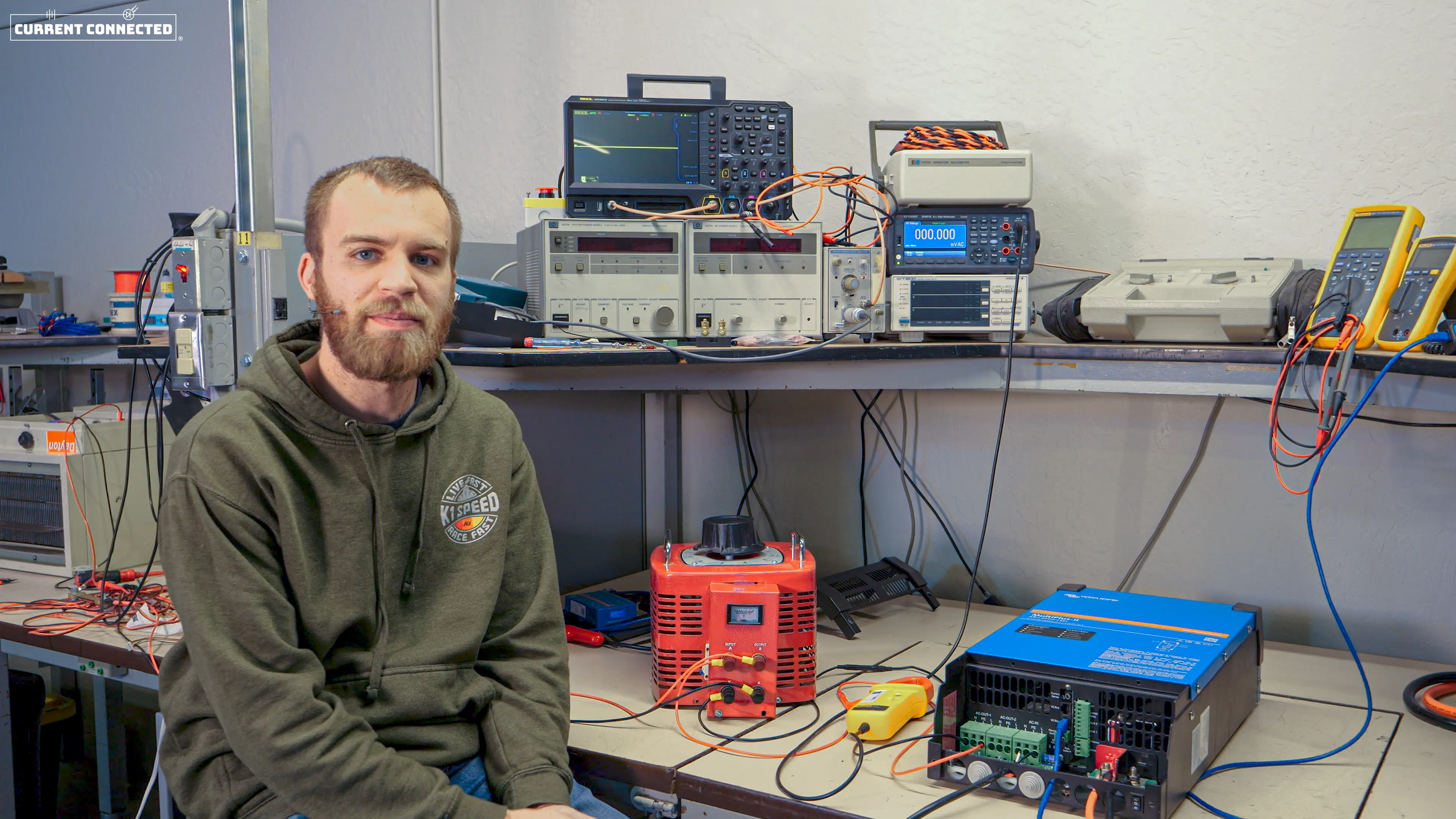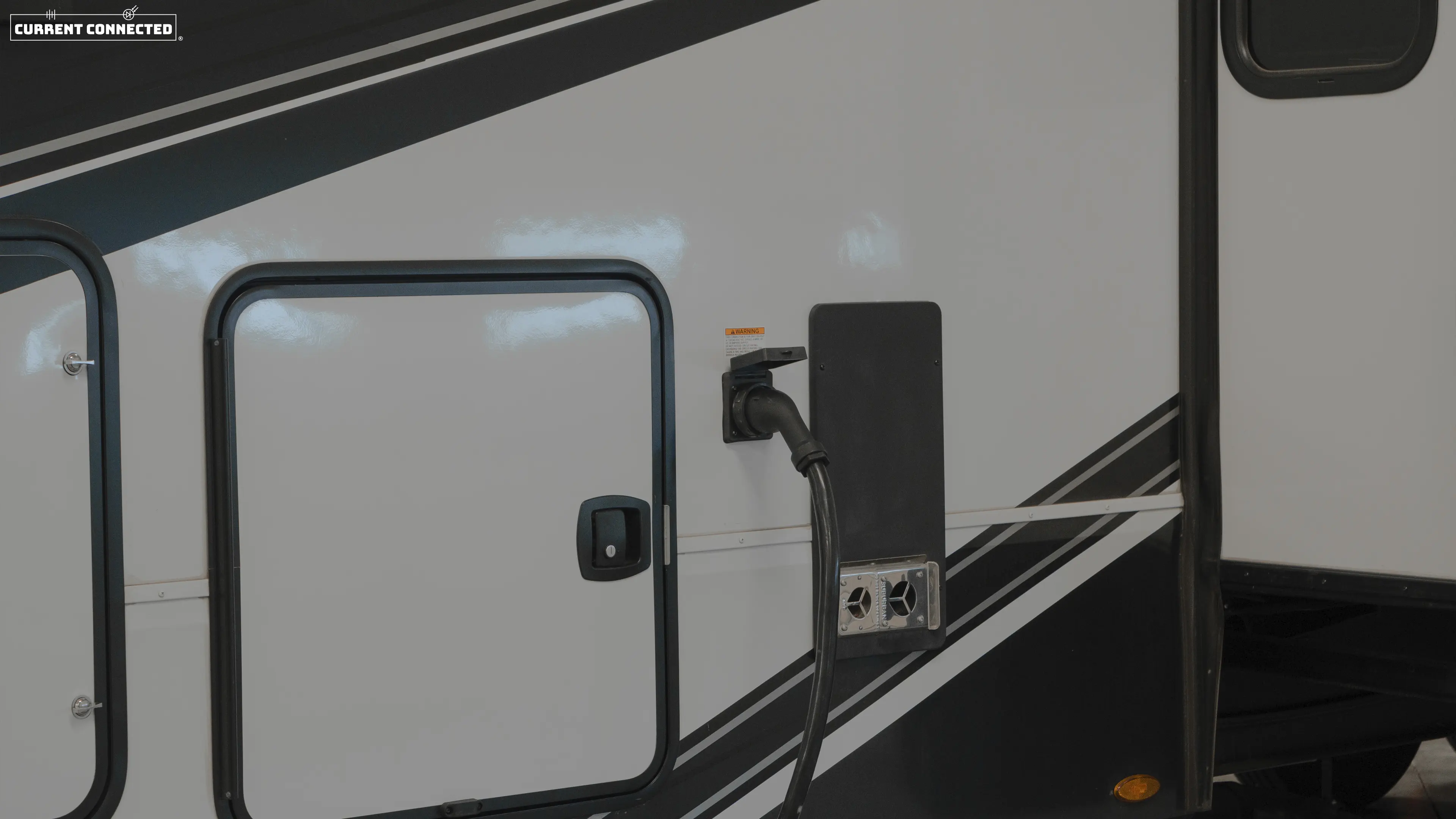PowerAssist with Victron Inverters

“Victron’s PowerAssist feature is honestly one of my favorite features,” Dexter, Current Connected’s CTO said. It’s one of the primary reasons he chose to use Victron’s 3kVA Multiplus-II 2x120V and 2kVA Multiplus units in his RVs. This feature automatically detects required power and supplements available grid power with battery power as needed.
This blog will fully investigate PowerAssist, but before that, let’s investigate a complimentary feature, PowerControl.
PowerControl

It’s possible to limit the AC current coming into a Victron inverter charger. This is necessary as the available power differs between locations. RV parks typically provide 30A or 50A shore power, the power available from the grid for RV hookup. Our line of Cummins generators range from 18-79A, and if you’re drawing power from a friend’s garage, you may need to limit the current to 10A or less to prevent tripping their breaker.
Of course, you could buy an inverter limited to the smallest amount of current possible. This would make it usable in every environment, but in places with higher current available, you couldn’t use the available power to run large loads such as compressors or A/C units.
Victron inverters address this issue with the current limit option, PowerControl. This allows you to set and modify the current limit at any time. This way, you can draw as much current as possible without exceeding the shore connection limits.
There are many ways to set the current limit with a variety of Victron devices.
The Cerbo GX is one of the most powerful options for setting the current limit as it enables complete monitoring and configuration of the Victron device. Connect to the Cerbo on a smart device through bluetooth, or connect remotely through the Victron Remote Management portal (VRM) when the Cerbo is connected to the internet.
Other options for adjusting the current limit include the Victron Digital Multi Control, the VE.Bus smart dongle, VE.Config, and the VictronConnect app.
Once the current limit is set, the Victron inverter charger monitors the incoming power, the batteries, and the load demands. When the incoming power is greater than the loads need, the inverter sends extra power to battery charging.
This feature is common among inverters, but Victron’s inverters include the unique and complementary PowerAssist feature.
PowerAssist

Most inverters receive incoming AC power and pass it through to loads or batteries. When AC power is not present, the inverter uses battery power to run connected devices. In this way, the inverter powers equipment from either incoming AC power or from battery power but not both.
Victron’s PowerAssist feature can use both incoming AC power and battery power at the same time. When incoming AC power is more than the loads need, Victron inverters use the excess power to charge batteries, just like other inverters do.
When incoming AC power is less than the loads need, Victron inverters automatically pull additional power from batteries.
The kVA rating on Victron inverters is the amount of power the inverter can provide, either off-grid or in addition to incoming AC power. An inverter rated for 3kVA can supply up to 3kVA from batteries in addition to incoming AC power.
Let’s look at an example.
Dexter connects his RV with the 3kVA MultiPlus-II 2x120V to 30A shore power. This gives him a total incoming power of 3.6kW (30A x 120V = 3,600W = 3.6kW). Dexter decides to make dinner and starts some loads in his RV. He turns on the toaster oven (1.6kW), the air fryer (1.4kW), and the coffee maker (1.38kW).
This gives a total of 4.38kW loads with only 3.6kW incoming shore power. Under normal circumstances, this would trip the breakers, and Dexter would have to turn off some loads to keep the total below 3.6kW.
Dexter’s 3kVA inverter, however, calculates the incoming and outgoing power and supplies the remaining 0.78kW from the batteries. If Dexter decides to run his A/C unit (0.64kW) in addition to the other loads, the inverter sees the need and compensates, drawing a total of 1.42kW from the batteries.
The 3kVA MultiPlus-II 2x120V is rated for continuous output of 2.4kW, meaning it can continuously supply up to 2.4kW in addition to incoming shore power. This means Dexter’s 3kVA MultiPlus-II 2x120V can supply up to 6kW to power loads when connected to 30A shore power (3.6kW shore power + 2.4kW from batteries). When connected to 50A shore power, this increases to 8.4kW (6kW shore power + 2.4kW from batteries).
For loads with a high inrush current, like a compressor or well pump, the 3kVA can pull up to 5.5kW from batteries for a short time to supplement incoming AC power. This gives a total of 9.1kW surge capacity when connected to 30A incoming AC. This is massive!
Choose any of our Victron inverters as a reliable part of your mobile or residential alternative energy solution.
Here at Current Connected, we’ve tested just how much power Victron’s 48V MultiPlus II 3kVA 120 Inverter 35A Charger can supply from battery power before it overloads. Check out the video here!
